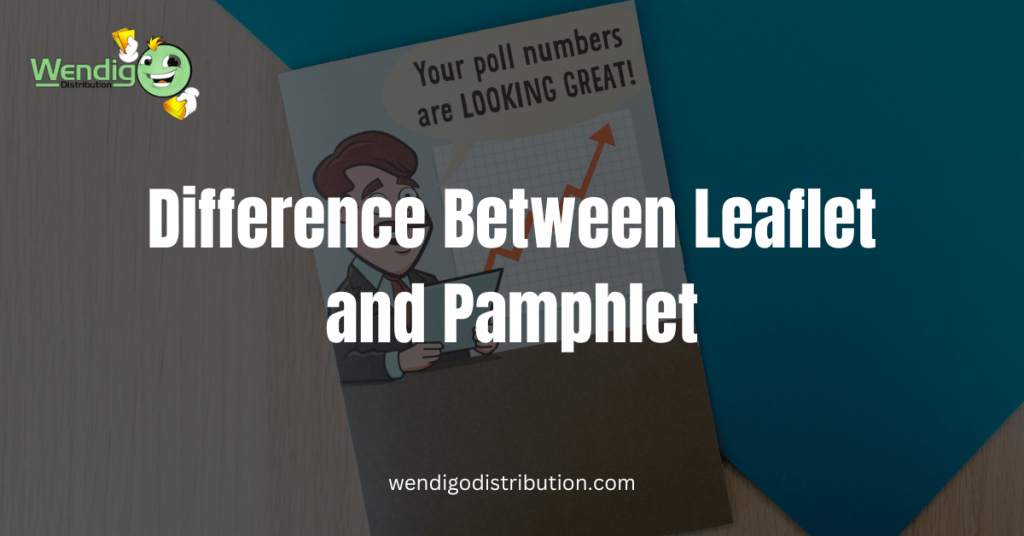As a business owner or marketing professional, you likely use leaflets and pamphlets to advertise your products or services. While these print materials may seem interchangeable, there are distinct difference between leaflet and pamphlet you should understand to choose the right option for your needs. A leaflet typically refers to a single printed sheet folded in half to make a small brochure, whereas a pamphlet denotes a booklet of multiple folded or stitched pages.
Leaflets are often used for quick references or announcements, given their smaller size and simpler format, whereas pamphlets allow for more in-depth content and a lengthier presentation of ideas. Understanding Leaflet vs Pamphlet the nuances in style, length, and purpose between leaflets and pamphlets will help ensure you select the most effective print material to convey your message to customers.

Key Difference Between Leaflet and Pamphlet
| Feature | Leaflet | Pamphlet |
| Definition | What is a Leaflet? A piece of paper, or several pieces of paper folded together, that gives information or advertises something | What is a pamphlet? A little booklet with a soft (usually paper) cover that briefly addresses a particular subject of interest |
| Size | Pamphlets, on the other hand, are usually smaller, around 5.5 by 8.5 inches, and are not folded. | Leaflets are generally larger in size, often around 8.5 by 11 inches or A4 size, and are designed to be folded |
| Content Coverage | Smaller size of Leaflet allow lesser content | Larger size and folding of Pamphlet allow for more content |
| Choosing Factor | For simpler messaging or a call-to-action, a Leaflet could work well. | If educating the reader or promoting a complex product or service, a Pamphlet may be better suited. |
| Paper quality | Usually standard or glossy paper, 90-170 gsm | Often higher quality, glossy or matte, 120-250 gsm |
| Weight and thickness | Lighter weight paper, around 60 to 70 pound, More Thicker | Heavier paper stock, around 80 to 100 pound text paper. Less thick |
| Durability | Less Durable (Thinner ) | More Durable (Thicker) |
| Usage | Common for sales promotions and event announcements | Ideal for educational materials, detailed guides, or comprehensive overviews |
| Engagement | Can be less engaging if overly simplistic | Often more engaging due to detailed content and visuals |
| Fold Options | May be folded once or multiple times | Typically unfolded or folded into sections |
| Pages | One-sided or double-sided | Multiple pages (usually 3 to 8) |
| Cost | Generally less expensive to produce | More costly due to multiple pages and binding |
See advantages and disadvantages of leaflet advertising
Conclusion
You now have a clear understanding of the key differences between leaflets and pamphlets. While they are similar in serving to convey information to an audience, they differ in their level of detail and purpose. Leaflets are brief and used to quickly spread straightforward messages, announcements or updates. Pamphlets, on the other hand, take a deeper dive into educating readers on more complex topics in a persuasive manner.
The next time you need to design and print marketing collateral, keep these distinctions of Leaflet vs Pamphlet in mind. Selecting the appropriate format for your content and goals will ensure maximum effectiveness in reaching your target audience. With the power to inform and influence readers, both leaflets and pamphlets can be powerful tools when used strategically. Understanding how to leverage their strengths is key to crafting a successful campaign.
People Ask Questions About Difference Between Leaflet and Pamphlet
What is the main difference between a leaflet and a pamphlet?
A leaflet and a pamphlet are both types of informational printed materials, but the main difference lies in their size and content. A leaflet is a single-sheet document, often printed on both sides, containing brief and concise information about a specific topic. On the other hand, a pamphlet is a more extensive document, consisting of multiple pages, providing in-depth information on a broader subject.
How are the sizes of leaflets and pamphlets different?
Typically, a leaflet is smaller in size compared to a pamphlet. Leaflets are commonly designed as a single sheet, folded into two or three panels, while pamphlets are larger and usually consist of multiple sheets, folded and bound together to create a booklet-like format.
Are there any differences in the content presentation between leaflets and pamphlets?
Yes, the content presentation differs between the two. Leaflets are designed to be concise and to the point, often highlighting key information with brief text and visuals to attract attention quickly. Pamphlets, being more extensive, can accommodate detailed explanations, longer articles, and additional graphics to provide a comprehensive understanding of the topic.
Which format is more suitable for a quick promotional message: leaflet or pamphlet?
For quick promotional messages or announcements, a leaflet is more suitable due to its compact size and straightforward content. Leaflets can effectively convey essential information, making them ideal for time-sensitive promotions or events.
When should I consider using a pamphlet instead of a leaflet?
Pamphlets are better suited for situations where you need to provide comprehensive information about a subject. If you want to educate your audience about a complex topic, present a detailed report, or provide an in-depth analysis, pamphlets offer the space and structure to do so effectively.


